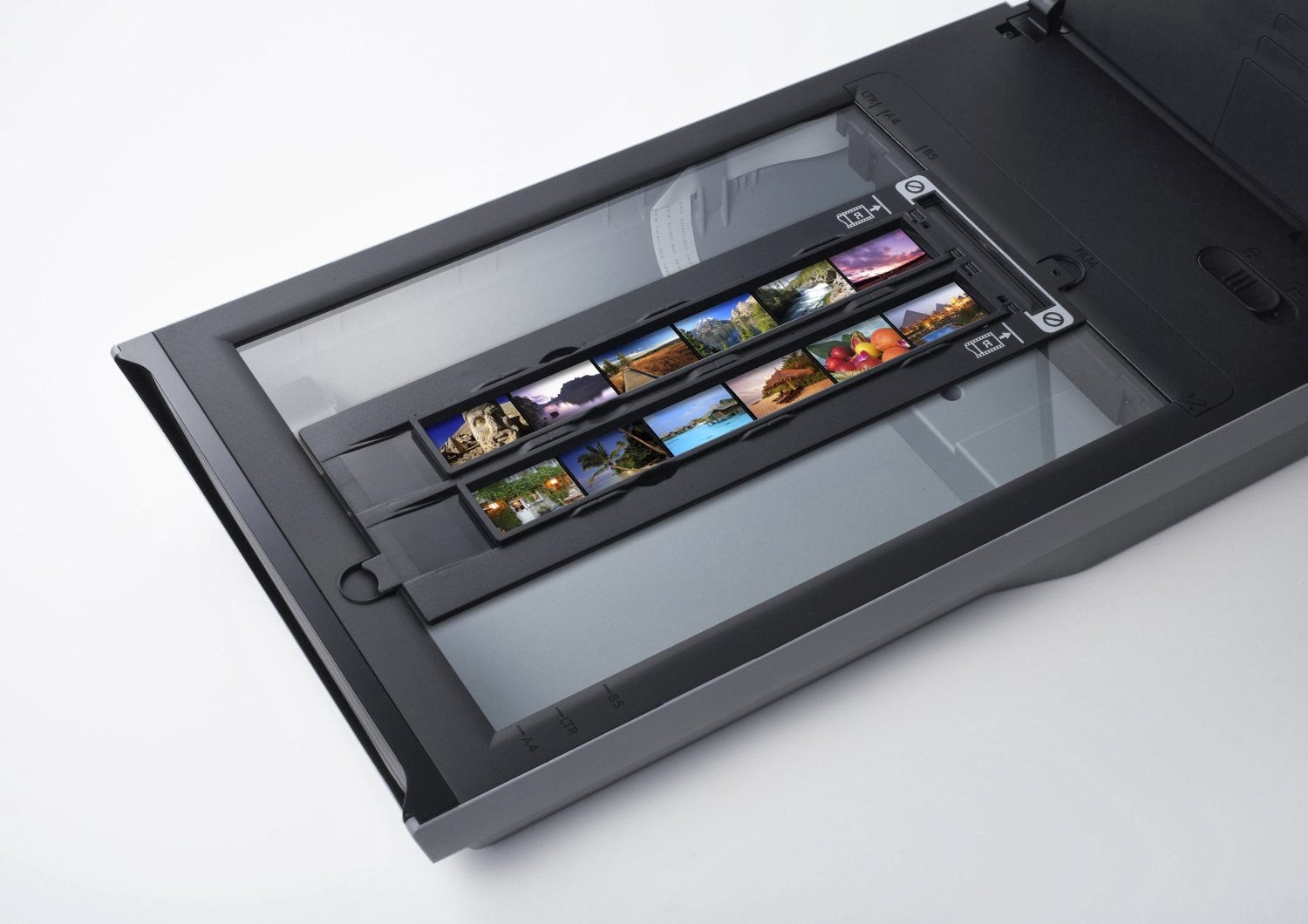List Price :
Product Feature
- My Image Garden Software handles photo and document scanning and organizes your files in a simple and friendly way so you can get the most out of them
- FARE (Film Automatic Retouching and Enhancement) Level 3: This built-in retouching technology delivers automatic correction to photos and film, removing much of the dust and scratches while restoring their color, all at the same time.
- Zero warm-up time and offers lower power consumption with super-efficient white LEDs.
- Auto Scan Mode automatically adjusts settings by detecting what you're scanning.
- OS Compatibility: Windows 7, Windows Vista, Windows XP/2000 and Mac OS X v10.5.8 to 10.7
Product Description
Product Detail
- Brand: Canon
- Model: CS9000F MKII
- Number of items: 1
- Dimensions: 4.40" h x18.90" w x10.70" l,10.10 pounds
Related Seller :
Amazon.com : Canon CanoScan 9000F MKII Color Image Scanner 10ft USB Cable for: Canon CanoScan 9000F MKII Color Image ScannerCanon CanoScan 9000F Mark II Color Image Scanner | Canon CanoScan 9000F Mark II Color Image Scanner High-speed scanner with professional film scanning qualityCanon 9000f Review and Best Price on Canon CanoScan 9000F Get the best price: http://discountneed.com/go/9000f on Canon 9000f scanner and read a lot of detailed information, more customer reviews and all you need Canon U.S.A. : Consumer & Home Office : CanoScan 9000F Mark IIEnjoy high-speed scanning for everything from photos to documents, to even 35mm film while also enjoying superb quality. The CanoScan 9000F Mark II Color Image Canon 9000F Mark II Replacement for Canon 9000F | B&H PhotoShop B&H's in stock, large inventory for fast shipping, great service and everyday low prices on Canon 9000F Mark II 6218B002 Replacement for Canon 9000F 4207B002.
Product Reviews
340 of 349 people found the following review helpful.By D. Graves
I tend to have about 3 scanners at any given time: a higher-end flatbed (for photos and film) and two economy models for my antiqarian book business, one newer with a 'good' glass surface (few, if any, scratches) and the second-newest one which usually has scratches, used for rougher items. In other words, I use scanners quite a bit and know a good one when I see it; and this new MKII version of the 9000F is quite good.
SPEED: The most important aspect of a scanner for someone who does a lot of scanning is speed: speed in warming up, speed in scanning in high-res. The 9000F MKII is excellent at both, better than my $700 Epson V700 (with one exception). The difference lies in the LED technology of the new Canon. My first thought was that LED may produce inferior results but this is certainly not the case, after analyzing the results. And because the LEDs don't need warming-up, 'warm-up time' is a thing of the past. The one exception in speed tests is scanning at high-res with Canon's FARE software turned on: very slow indeed. However, I personally always make raw scans and then batch-process them in Photoshop, so this is not a factor for me. With FARE turned off, the speed is very good, even in high-res.
SOFTWARE: The second most important aspect of a scanner is software, both the user interface and the correction software. Canon's UI software has always been inferior to Epson in that it is dumbed-down and kind of clunky in comparison to the customizable and fluid Epson UI. However, there are now big improvements in this area: I was amazed - really, amazed - at how well Auto Scan Mode works: excellent recognition, cropping, scanning and saving files in just one click. Scary good, really. Auto Document Fix (as opposed to photo fix with FARE) is also quite advanced and, for example, makes text as clear as possible - automatically. And while settings are fully customizable, as Epson's are, Canon still lags behind a bit, clearing your settings at times (Epson requires the user to reset, which is better). One software feature that, again, amazed me, was 'Gutter Shadow Correction': as a book dealer I often scan pages within books; this feature automatically recognizes the gutter shadow (the crevice between pages) and eliminates it. Wow.
QUALITY: Let's make this simple: today, even low-end scanners have incredible quality. You are getting what 5 years ago would be a $1,000 professional scanner. To get caught up in dpi and microscopic analysis of scan results is a bit too much when you're talking about a $170 scanner. The highest usable dpi for reflective media is about 3600; anything beyond that is useless (i.e., the scanner's dpi exceeds that of the photo you're scanning!). For film - certain, high-res film - maybe 4800dpi comes into play. Beyond that, get a film scanner - that's why God invented them. To expect the Ferrari of imaging devices for $170 is a bit much. This is why I've always had a separate photo scanner in addition to lower-end scanners for other uses. The 9600 dpi CCD sensor on this scanner is superb. This 9000F MKII has tremendous image quality; don't let anyone convince you otherwise.
One unexpected feature is the fact that the scanner includes not only 35mm film capability, but medium format as well. On the downside, Canon no longer bundles Photoshop Elements with the scanner.
As for new bells and whistles, the major differences between the original 9000F and the MKII (aside from the improved optical quality) are the external 'EZ Buttons': touch a button for instant copy/scan/email/pdf functions.
All in all, an excellent scanner and well worth the money.
39 of 39 people found the following review helpful.
By Chris G. Pflum
I bought the CanoScan 9000 F Mark II scanner in March, 2013 for $179.00 and use it primarily to scan 35 mm and 120 mm film. So far I have scanned over 1,000 frames. I have uploaded low-resolution images to the Amazon site (11/26/13.. Amazon has deleted these images), and have provided (below) links to high-resolution scans. Rather than taking my word, or anyone else's, on the quality of this scanner, look at the images it has produced and judge for yourself. The links will take you to my photography web site. To view an image at a higher resolution, click on the "sizes" icon at the far-right bottom of the page; the "original" option is the highest resolution available.
1.Cowboys http://www.pflumphotos.com/The-USA/New-Mexico/i-4hx9PfH/A
This and the five photos that follow were shot on 120 mm Fuji Velvia (transparency) film in October 1980.
2.Moth http://www.pflumphotos.com/The-USA/Florida/i-cbsd895/A
This and the seven photos that follow were shot on 35 mm Kodak Ektachrome (transparency) film in 1977.
3.Key West http://www.pflumphotos.com/The-USA/Florida/i-NHdd963/A
35 mm Kodak Ektacolor (negative) film shot in 1974.
4.Santa Barbara http://www.pflumphotos.com/The-USA/California-1/i-fKTHmx7/A
120 mm Kodak Vericolor Professional (negative) film shot in 1988.
5.Biscayne Bay http://www.pflumphotos.com/The-USA/Florida/i-fcZ62M6/A
35mm Kodak Kodacolor II (negative) film shot in 1972.
For the money, I don't think you could buy a better scanner; however, the software, could be better.
The Canoscan offers three programs for scanning film: Auto Scan, Custom Scan and Scan Gear. It also comes with another program, Image Garden, for cataloging and filing images. I am currently using Adobe Lightroom to do this and do not care to switch.
To run Auto Scan you simply push the auto button on the scanner. The scanner detects whether you are scanning film, photos or documents, automatically selects the resolution and file format and sends files of each image to your computer. In regard to film, the Auto Scan will scan only 35 mm film in the JPEG format at 1200 dpi. If you want a TIFF format and / or a higher resolution, you must activate the Custom Scan or Scan Gear from your computer. The auto and custom scan programs will scan only 35 mm film while the Scan Gear program scans 35 mm and 120 mm formats and lets you make corrections on a low-resolution preview. I generally use Scan Gear for all my film scans because I can select which frames to scan from the preview; the other programs scan every frame.
For the most part, the programs work OK, but are far from perfect. Each program requires you to designate a folder on your computer that will store the scanned images. If you create different folders for each program you will get triplicate files of the same images no matter which program you use.
While the scanner's uncorrected output is pretty good, a serious photographer would probably want to make post-scan adjustments using more specialized software such as Adobe Lightroom or Photoshop. The Scan Gear program can make useful adjustments, such as flip or rotate, but does a terrible job on the finer adjustments such as color balance, exposure and contrast.
The scanner's ability to output "TIFF" files rather than just "JPEG" is a real advantage. The TIFF format is uncompressed meaning that it captures more information than JPEG and thereby allows a wider range of corrections (assuming you have the software that can make the corrections). Unfortunately, the TIFF files are about four times the size as JPEG.
When I first tried to scan a full-frame of 120 mm film at 9600 DPI (the highest) resolution, I got an error message: "Scanner cannot be performed unless the crop size or output resolution is reduced to 10208 x 4032 pixels or less." This message also appears, but less frequently, when scanning 35 mm film at full-frame. By trial and error, I found that I cannot scan a full-fame of 120 mm film at more than 2400 dpi. I also discovered that if I use a crop tool to reduce the size of the scan area, I can avoid the error message and scan at 9600 dpi. This scan, however, creates a very large file of more than 500 MB. The manual does not explain what this confusing message means. It appears to say that you must reduce resolution in terms of pixels but the scanner settings are expressed in dpi's. (Pixels and dpi's are not equivalent terms). I thought that I might have an outdated driver, but the Canon web site offers only one driver: "9000F MarkII MP Drivers Ver. 1.00" while the scanner came with driver 19.0.2. It is not clear which is the more current, so I am still using the driver that came with the scanner.
Despite the software quirks, I am giving this scanner five stars because it is reasonably-priced and produces scans that are comparable to drum scans.
66 of 72 people found the following review helpful.
By Amazon Customer
I bought this scanner because someone else had recommended it. The scanner arrived when Amazon said it would arrive. I immediately unpacked it, installed the software, and tried scanning some negatives. Excellent results! I then tried some old 35mm slides and it worked equally well. I have more than paid for the scanner by the amount of pictures that I have scanned from the many negatives that I had managed to amass. If you scan several pictures at once, the software does not treat them as one giant picture, instead it makes them into individual pictures. My only concern is that I feel that the film carrier is or could be a bit flimsy, but with care it should last for as long as you own the scanner. Also, the LED lighting makes for an almost instant on scanner. I just can't say enough good things, I am so glad that I bought it.












+Scanner.jpg)


0 comments:
Post a Comment